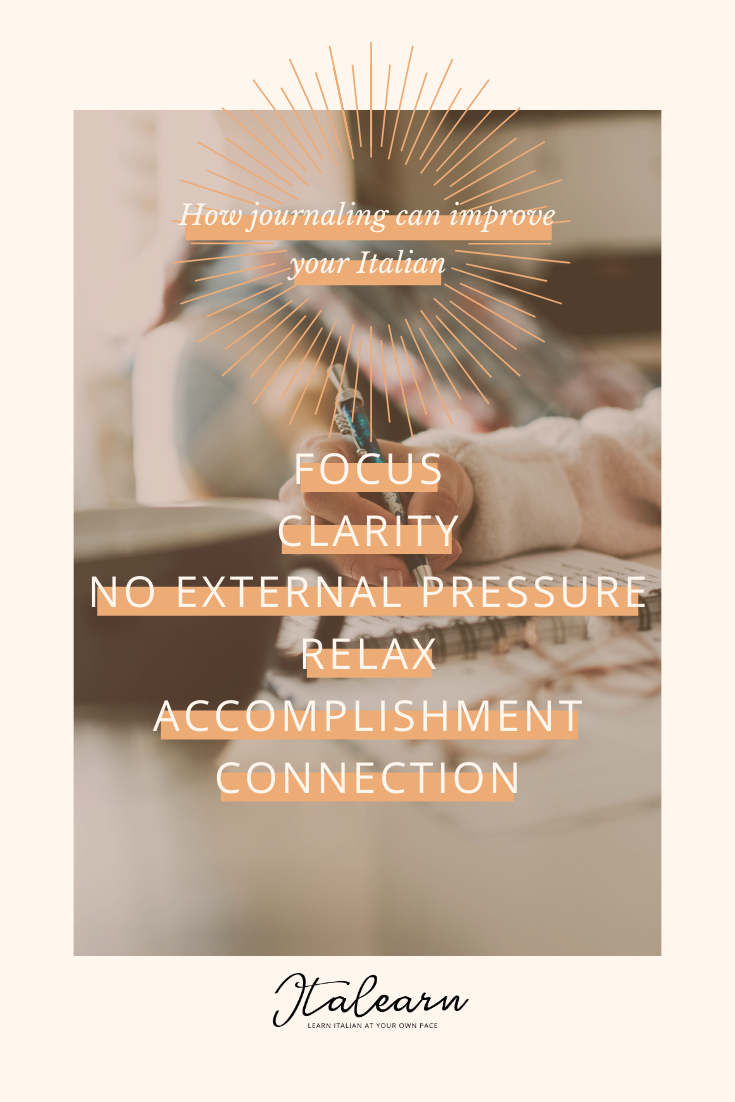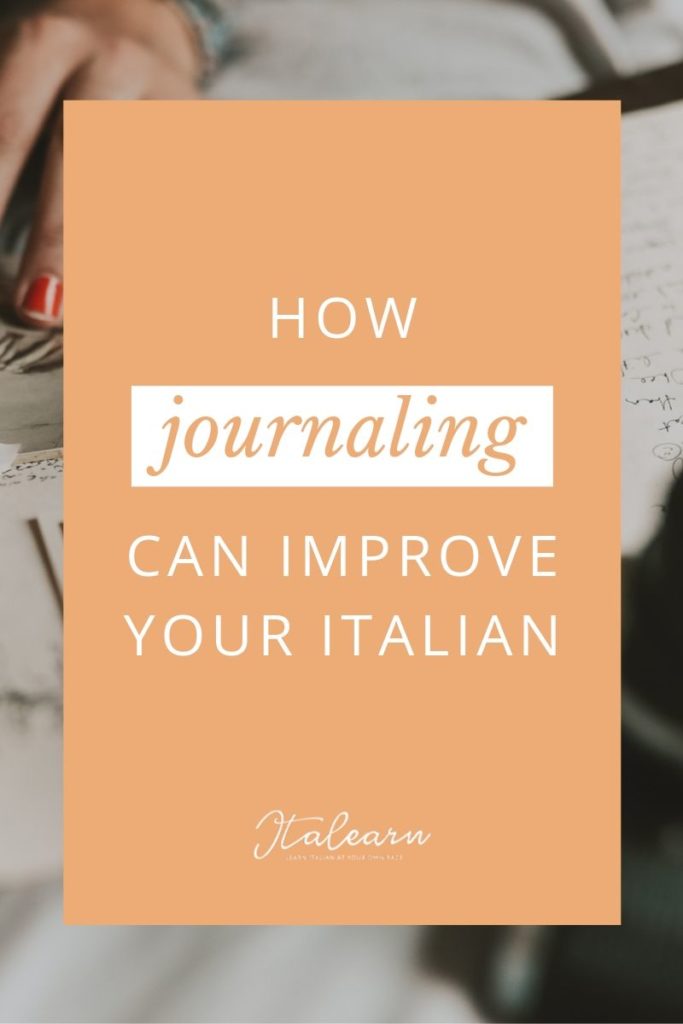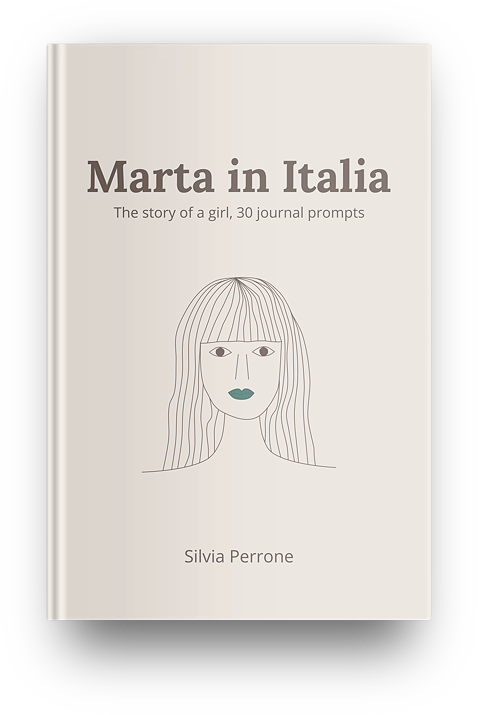A couple of months ago I happened to find an old diary that I wrote when I was in high school. Reading it was quite the experience: my life was all there, a punctual analysis of major and minor events that I wanted to fix on paper to… I don’t really know why I had a journal, I suppose I needed to dissect the things that were happening to me to understand them and to understand myself.
I was writing with a purpose and it showed in the quality of my writing. Journaling wasn’t just my favorite place to vent, it was a creative outlet that shaped my perception of my life through my words. I think it is not surprising that I also found a few poems in there.
Writing in your journal sets the mood. It calms you down when you feel anxious, it sparks your creativity when you are feeling a little too conventional, it helps you to go deep.
What does it all have in common with language learning?
They are two processes that overlap, they intersect right where your hopes and good intentions impact with the harsh reality of language learning.
Being both a language learner and a language teacher, I know frustration and overwhelm like the back of my hand. It doesn’t matter how good you are at languages or how advanced and fluent you already are: there will always be a time when you don’t understand something and you will be mad at yourself for not being able to understand it.
It has happened to me a lot, especially in the initial phases of learning a new language. Beating yourself up will not help, in case you were thinking about it. Nor studying like crazy, day and night, until a lightbulb finally illuminates the long and winding road of understanding Italian.
There isn’t a quick fix, it simply does not exist. But there are continued, long term, little actions that you can take to ease out of that discomfort.
And one of them, you guessed it right, is journaling.
What I think is the most effective practice in language journaling is not journaling in your target language tout court, or journaling about language learning.
As for a lot of other things in life, in medio stat virtus, that’s to say: there’s good in the middle.
How can you use journaling to improve your Italian?
Set some alone time for you and your journal at least once a week (this is just a recommendation, not a doctor’s order, but the more you do it, the better), get yourself a nice notebook — I prefer blank pages, but lined or graph paper are also ok, and a pencil. For basic sessions this is all you need.
Then if you want to spice things up a bit, you’ll need a larger equipment: markers, colored pencils, acrylic paint, nail polish (yes, I use it for my most “extreme” pieces), glue, colored paper, old magazines, old books, supermarket flyers, etc.
You need to include art in your Italian journaling, because it will give you the freedom to “just go”, without thinking too much of getting it right.
Also, there is no right or wrong way of making art, and this is important when you are sitting at a crossroads waiting to decide which way to go. Each way is your way, you don’t even have to choose.
Adding art to your journal also gives a sense of accomplishment that makes you feel at peace with yourself. We’re really trying to create a positive environment, free from judgement, fear and stress. Most language learners are held back by their own feelings, so it’s important that we deal with them in order to have a pleasant experience while we learn and create.
Journaling for language learning can either be very personal, or completely detached from your private life. Again, there are no fixed rules, the intention is to get in touch with the language, focus on it in every way you feel comfortable with.
There are many exercises that can stimulate your imagination and get you started, I personally like to begin with just single words and play with them, and then later move on to something more “intense”.
For example, I have pages where I write a word in the middle and then surround it with doodles and drawings, and while I draw I repeat that word (silently is perfectly fine!) I imagine the scenarios it evokes in my mind, I just let it sink.
Sometimes I like to look for journal prompts on Pinterest and write in my target language, Italian in your case. It’s just for inspiration so the question can be in any language.
This method is the core of my Story+Journal “Marta in Italia”: there is a story that you can read throughout the journal, and it’s in Italian, and then there are prompts and questions to set your mind in motion. The good thing is that there are absolutely no rules on how to fill the blank pages. You start by reading a story, meditate on what you read and then talk (write) about it, or about your personal experience, or anything that a word or a phrase made you think about.
This is just one way of working on your Italian through journaling, being inspired by a story, but it’s not the only one.
Think of your passions, your hobbies, the things you like the most doing: they are all perfect to start a conversation in Italian in your journal.
Your journal is private, no one is going to read it except you, and I know that this makes you feel more relaxed and sensitive. This mood welcomes true learning, because there is no external pressure, it’s just you and your journal.
You are not studying Italian, you are getting to know it better, you are spending time with it like you would do with a good friend. Here lies the strength of journaling in Italian: slowly falling in love with the language.
When I write my stories, they don’t come to me easily or quickly. Sometimes I have an idea, other times just an intuition, or a name. So I brainstorm for a few minutes and in the next days or weeks I journal about these thoughts. Journaling allows me to go deeper, to really become my story.
Learning Italian, or any other language, is a process made of several different parts that involve your active and passive contribution. Journaling is both active and passive learning: active because it involves your conscious choice of choosing your word, your sentence, your topic to journal about, and because you actually do something with the language; passive, because you are creating a deep connection with Italian without even realizing it.
To wrap it up, I’ll just make a list of words that summarize the benefits of journaling to improve your Italian:


(Focus, Clarity, No external pressure, Relax, Accomplishment, Connection)
If you don’t know where to start, download my free guide “5 steps to writing your own travel journal in Italian” there are really easy suggestions that you can try immediately, no trip to Italy required! The guide is available through sign up and it will allow you not only to receive my newsletter, but to gain access to my Library of resources — all downloadable for free, of course.
If you are up for a little challenge, then go straight to Amazon and get your paperback copy of “Marta in Italia”, the story is already there, the writing prompts are already there, the blank pages are also there, and drawings and doodles too. Just grab some colors and dig in.
This book is a story, a journal, and the most flexible Italian language practice you can find.This is the story of Marta, a young woman who wants to discover her Italian ancestors and ends up discovering a lot more.The story starts in English and goes on in Italian. There are 30 short chapters with writing prompts. Each chapter is followed by two blank pages that you can fill with your words, drawing, doodling, photos, etc.




